We independently evaluate all recommended products and services. If you click on links we provide, we may receive compensation.
When people experience skin concerns such as redness, dryness, and discomfort, they’re often told to limit their use of active ingredients and stick to gentle, hydrating formulas to help soothe their skin. Usually, this advice works. But if you’re seemingly doing everything right and still find yourself struggling with sensitivity, you may want to take a closer look at your nail care routine.
In recent months, a slew of creators have taken to social media to share stories about how their skin concerns vanished — or, at the very least, lessened — after they discontinued gel manicures. To find out whether gel manicures can actually contribute to skin issues such as sensitivity and eczema, we turned to double board-certified dermatologist Dr. Karan Lal, D.O., FAAD. Read on to learn what we found out — and discover what it means for your next mani appointment.
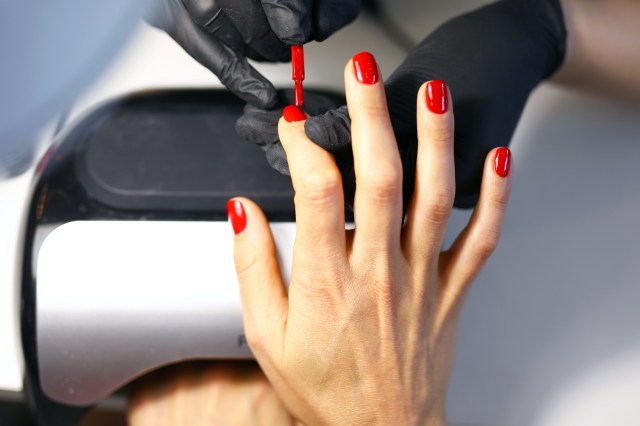
What Is a Gel Manicure?
Standard manicures use nail varnishes that dry, like paint, when exposed to the air. Gel manicures are a bit different. According to Dr. Lal, the nail polishes used for gel manicures typically include a type of ingredient called acrylates, such as methacrylate or dimethacrylate. Rather than drying in the air, these ingredients harden and dry when exposed to a light source — typically, UV light or LED light. According to a 2023 article published in Chemical & Engineering News, these light-curing ingredients are what give gel manicures their long-lasting, chip-resistant finish. The ingredients can be found in both traditional gel polishes and more durable “hard gels” — the formulas differ only in how much of each ingredient the given polish contains.
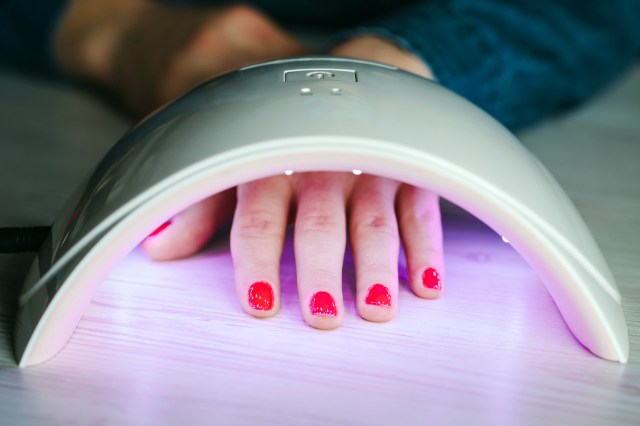
Can Gel Manicures Cause Allergies?
Yes, gel manicures can cause allergies in some. Dr. Lal explains that acrylates — the main “active” ingredient, so to speak, in gel nail polish — are “well-known and documented contact allergens.” As such, he says, gel manicures have the potential to cause allergic contact dermatitis, a skin concern characterized by dryness, redness, itching, and discomfort. Typically, allergic contact dermatitis doesn’t develop immediately — so it’s unlikely to develop after your first-ever gel manicure. Instead, Dr. Lal says, it “occurs after continued and repetitive use of a product” that irritates your skin. It’s also worth noting that not everybody who gets gel manicures will develop allergic contact dermatitis. It’s most often seen in those with sensitive, reactive, or eczema-prone skin.
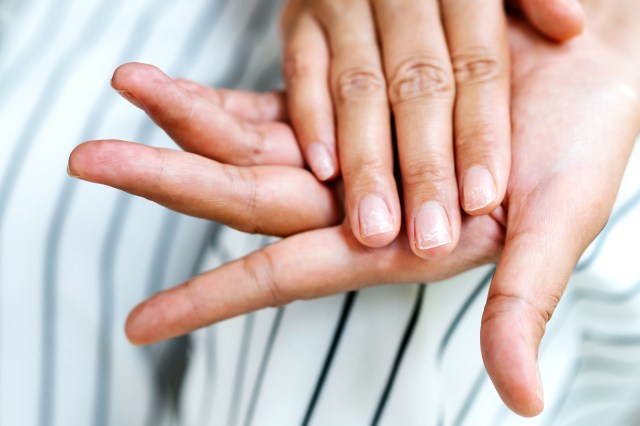
What Does Allergic Contact Dermatitis Look Like?
As Dr. Lal explains, allergic contact dermatitis on the fingers typically manifests as cracking, crusting, or oozing around the nail. In severe cases, the nail may separate and fall off entirely. And to make bad news worse, the allergic reaction can spread to other parts of your body that you touch frequently. In fact, “one of the most common sites of contact dermatitis on the face associated with manicures is the eyelids,” Dr. Lal says.
The good news is that allergic contact dermatitis can usually be resolved by avoiding the stressor — which, in this case, means taking a break from gel manicures (and other products containing acrylates). If your skin is especially irritated, you can also apply an over-the-counter product to help hydrate, strengthen, and soothe the skin. Dr. Lal is particularly fond of the Avène Cicalfate+ Restorative Protective Cream, which is designed to protect and help restore compromised skin.
If you discontinue gel manicures and don’t see improvement in your allergic contact dermatitis within a few days, consider visiting your dermatologist. They may be able to prescribe something stronger to help your skin heal.
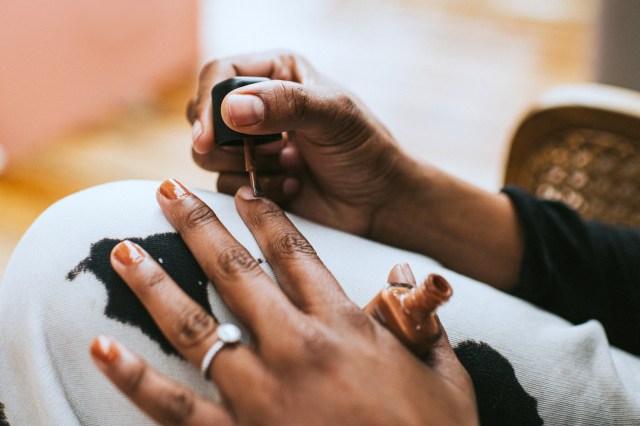
Long-Lasting Alternatives to Gel Manicures
Gel nail polish is durable and long-lasting, but it’s not the only option for those seeking a great-looking manicure. Here are a few alternatives worth pursuing if you’re not willing to go au naturale:
Standard polish: Standard nail polish is typically free from acrylates, the main ingredient in gel polishes associated with allergic reactions. If you want to be extra safe, look for “nontoxic” nail polishes (often labeled “17-free” or “21-free”). We’re big fans of the plant-based polishes from Canadian nail brand BKIND, which are vegan, cruelty-free, and made without 21 potentially harmful ingredients commonly found in traditional nail polishes.
Gel-finish nail varnishes: Many nail polish brands offer long-lasting polishes that boast a high-shine finish similar to gels, but don’t require a UV lamp — or acrylates — to cure. We love the Essie Gel Couture range, which includes 61 vibrant shades that wear for up to seven days without chipping, cracking, or peeling.
Natural gel alternatives: French nail brand Manucurist launched its own version of gel nail polish that excludes dozens of toxic, sensitizing, petroleum-based, or potentially harmful ingredients. The polish doesn’t last quite as long as typical gel (up to 10 days instead of two weeks) but we think it’s worth it since up to 84% of ingredients are plant-based. The polish is also removed easily with nonacetone remover, making it easy to use at home.
Finally, consider visiting the doctor and asking for an allergy test. A thorough test can pinpoint which ingredients you’re allergic to and help guide your choice the next time you’re perusing the nail polish aisle.
This article is for general informational purposes only.
Affiliate Disclaimer Medical Disclaimer



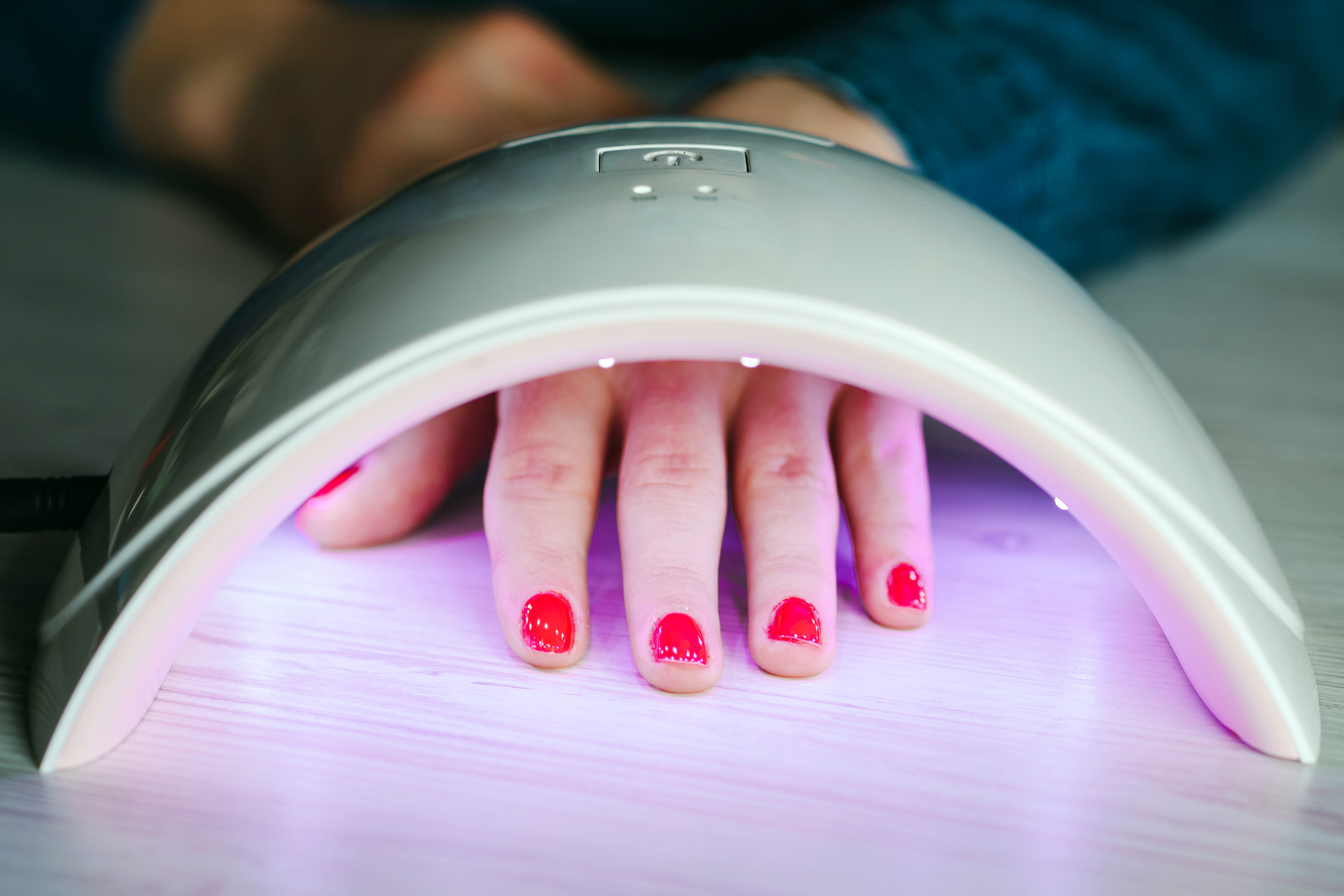



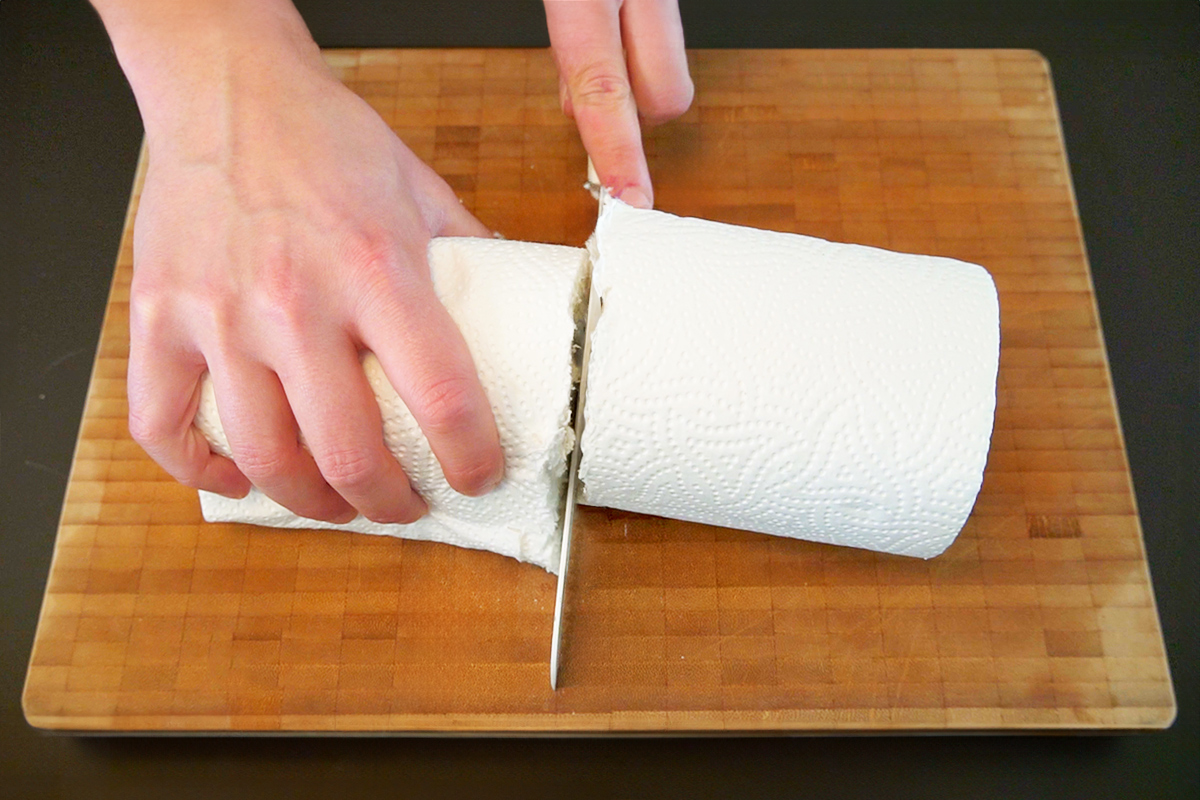



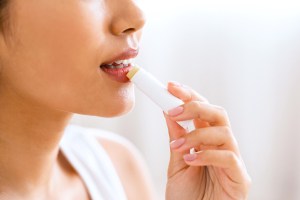




 Unique Beauty is free for all users.
Unique Beauty is free for all users.